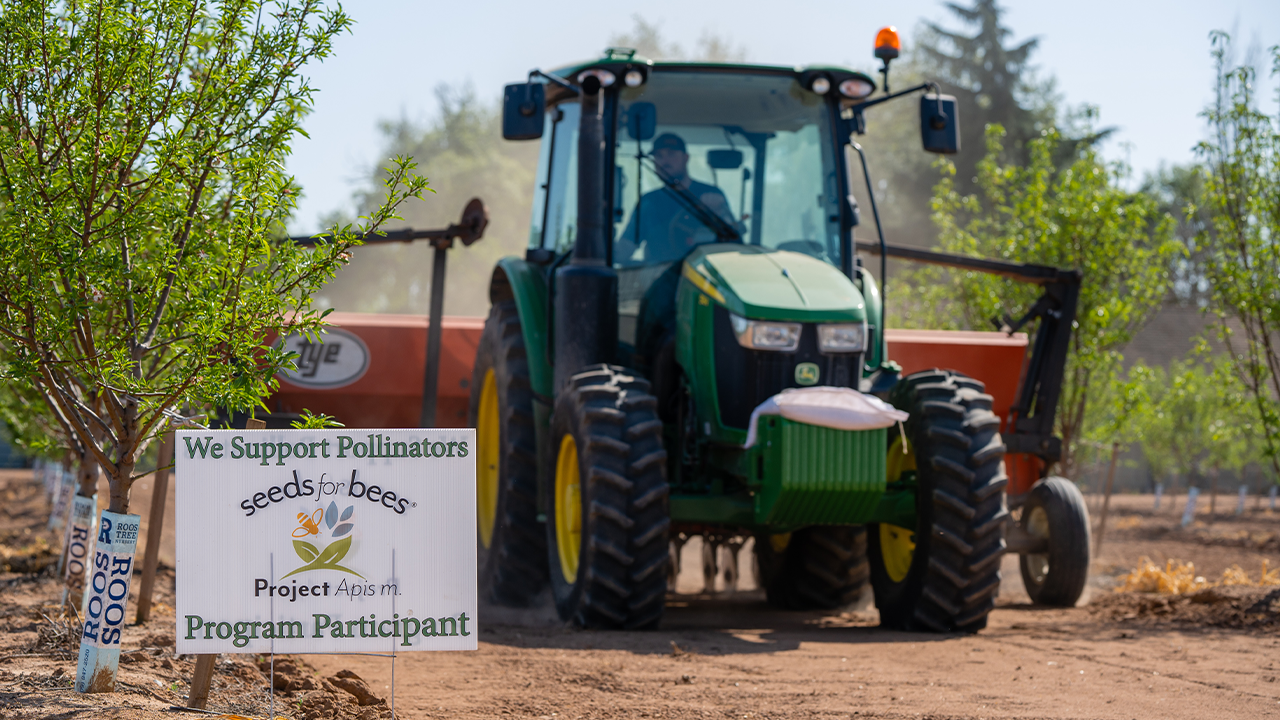This year, growers must apply by Aug. 31 to be considered. First-time applicants can receive up to $2,500 in seed mix; those participating for a second year are eligible for up to $1,500 in seed mix. Discounts also are available for growers who already participated in the program for two years.
“Applications this year have really taken off. It has absolutely gone above and beyond what we thought it would. The momentum is huge,” said Rory Crowley, the director of habitat programs for Project Apis m. “I know almond harvest is coming up, but I’m encouraging all growers in the next two weeks to get in there, put in their applications and get their orders in.”
Crowley said the goal this year is to provide enough seeds for 15,000 acres of cover crops in California. The highest total in any previous year was 12,500 acres.
Response has been very positive since the application window opened two months ago, Crowley said. As of August 1, Project Apis m. already has approved 125 of the 170 applications it has received. The approvals represent about 8,000 acres, Crowley said, so there still is time for more growers to take advantage of the program.
Applying is easy. Growers simply need to go to the Project Apis m. website, click on the “Seeds for Bees” link and follow that to the application form. Crowley said the form should take less than 20 minutes to fill out.
The website also includes an easy-to-follow reference guide that includes answers to many common questions growers have about managing and planting cover crops.
“We want to make it easy, accessible and user-friendly to participate,” Crowley said.
Growers also can download the Almond Board of California’s Cover Crop Best Management Practices (BMPs), an easy-to-follow guide that covers everything any grower might want to know before deciding to introduce cover crops into his or her orchard. More information also is available from the Almond Board at www.almonds.com/covercrops.
One of the goals this year, Crowley explained, is to assure delivery of one of the five available seeds mixes to every participating grower by Oct. 1. That way, cover crops can be planted in October, which makes it more likely that they will be blooming when almond trees also are in bloom next year.
“We want those bees to have an awesome time,” Crowley said. “That’s what we’re here for.”

